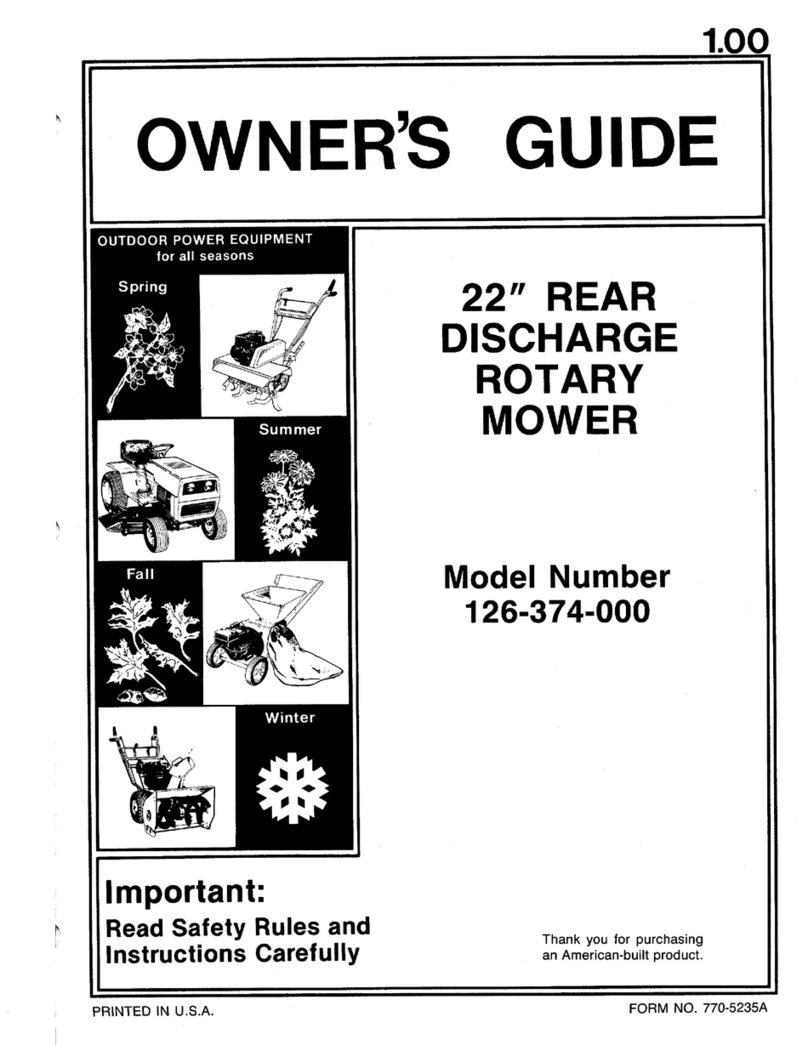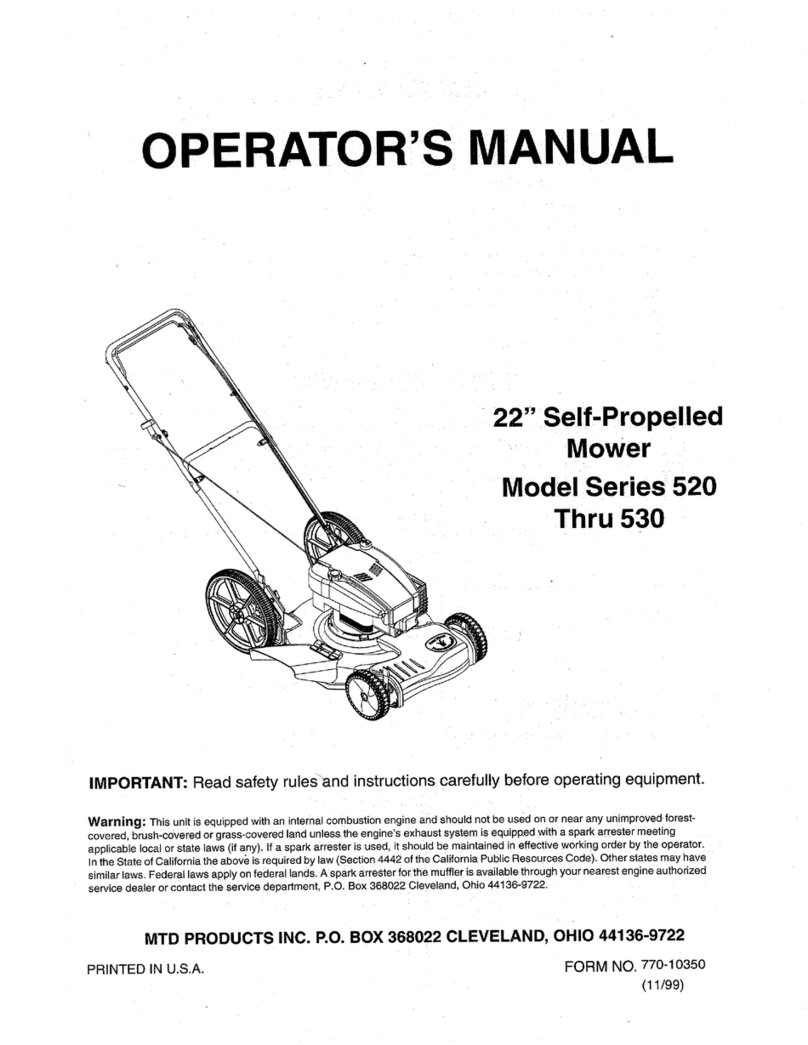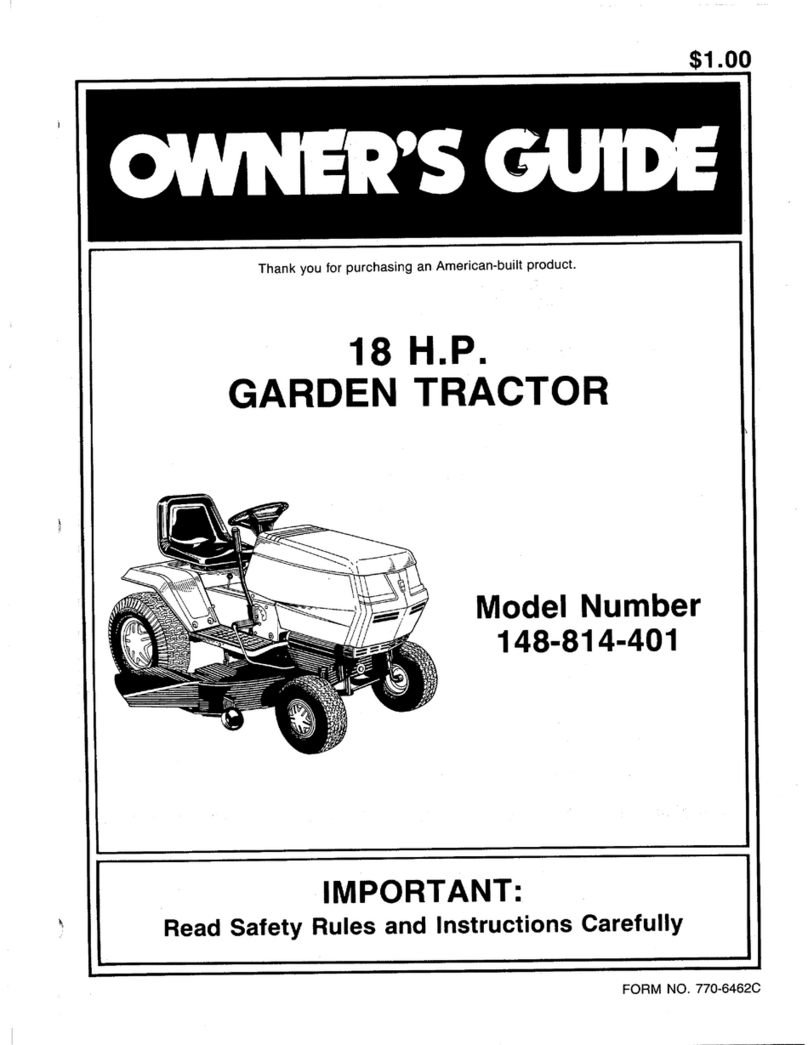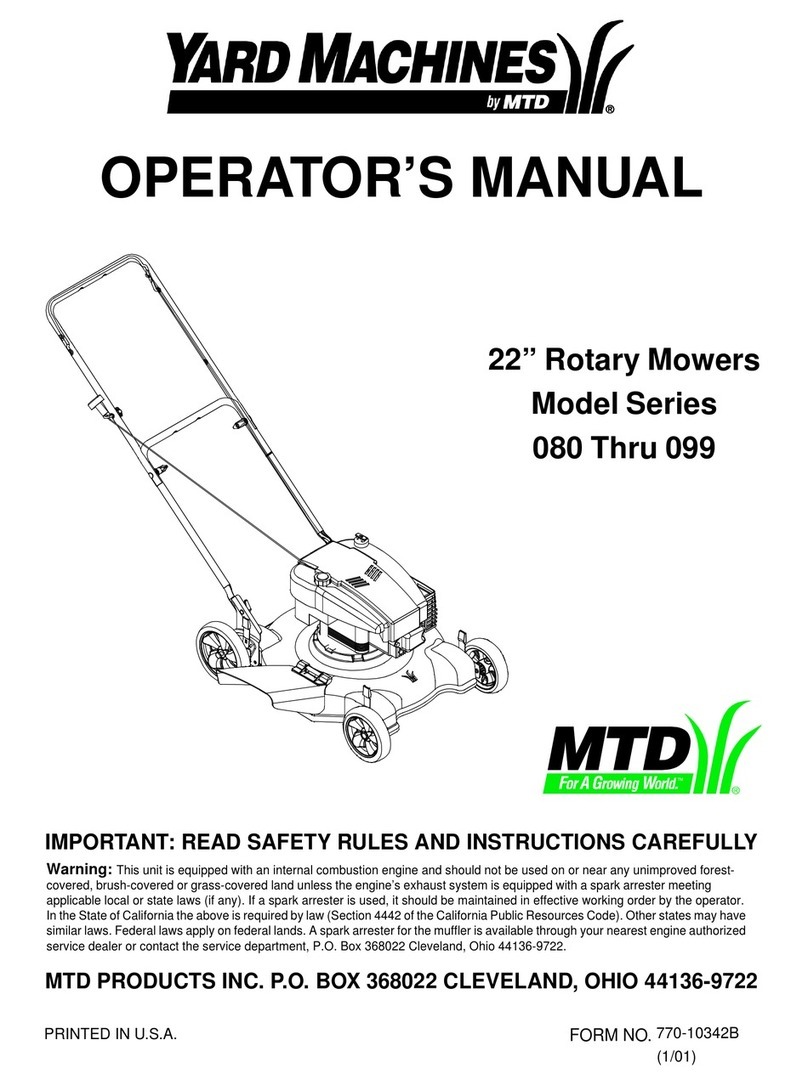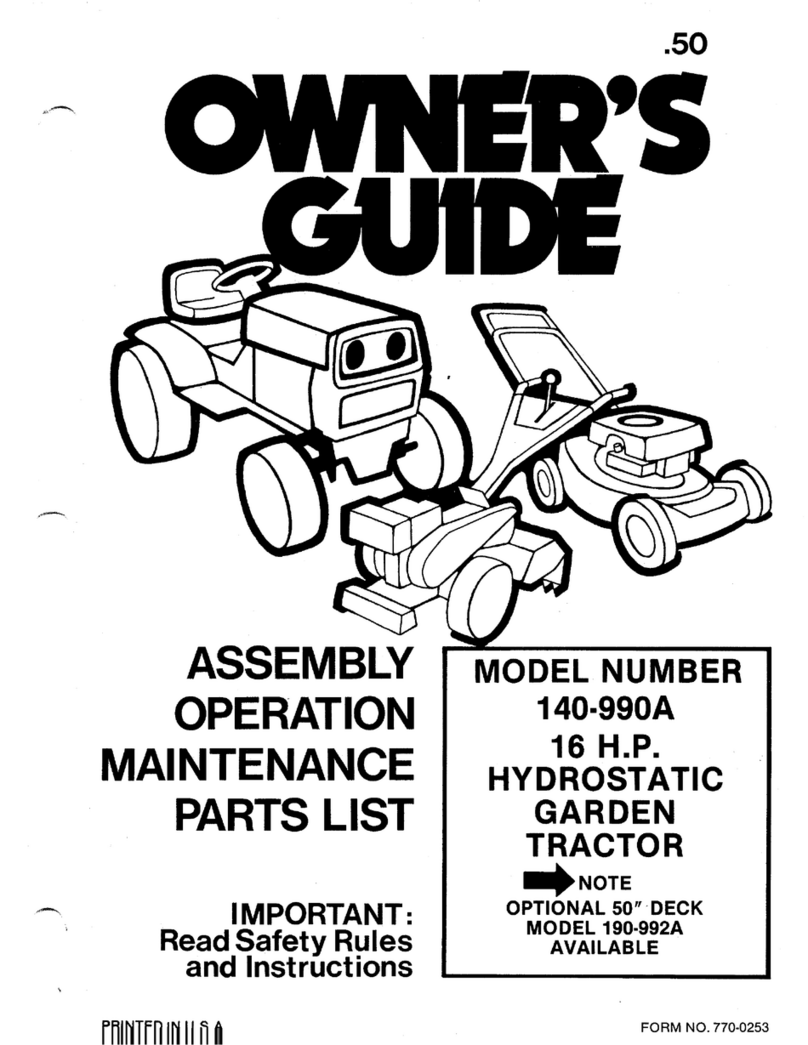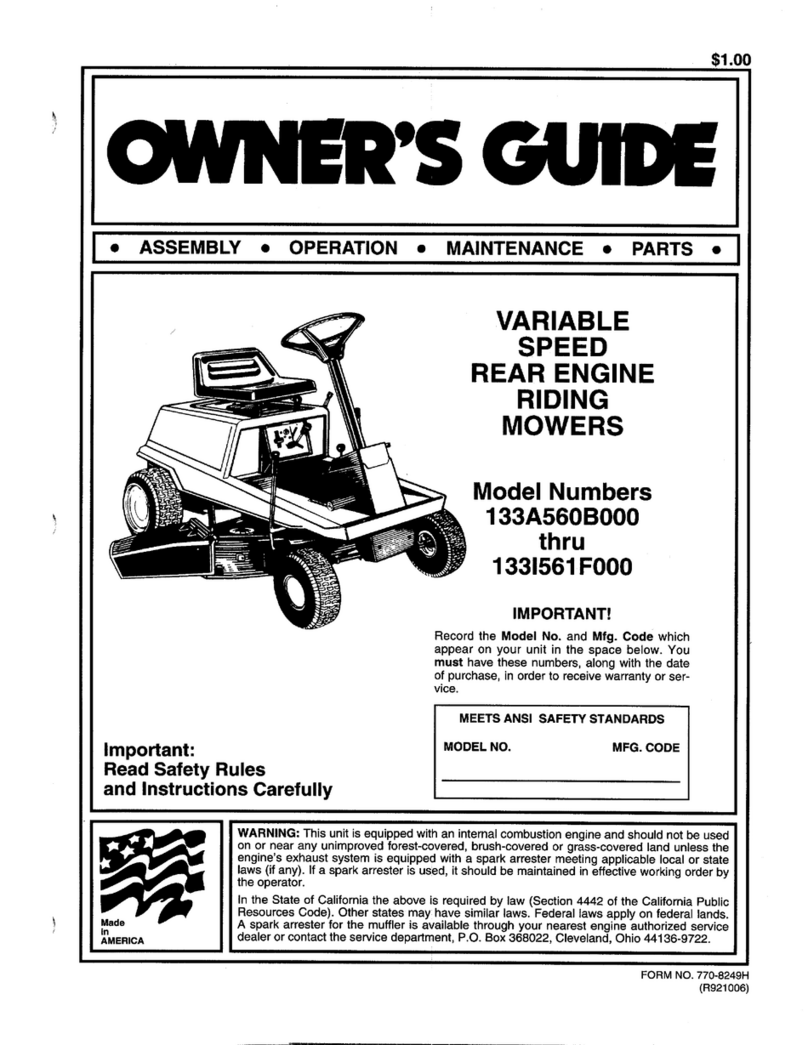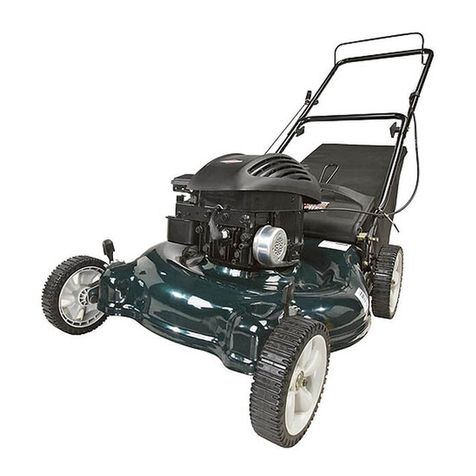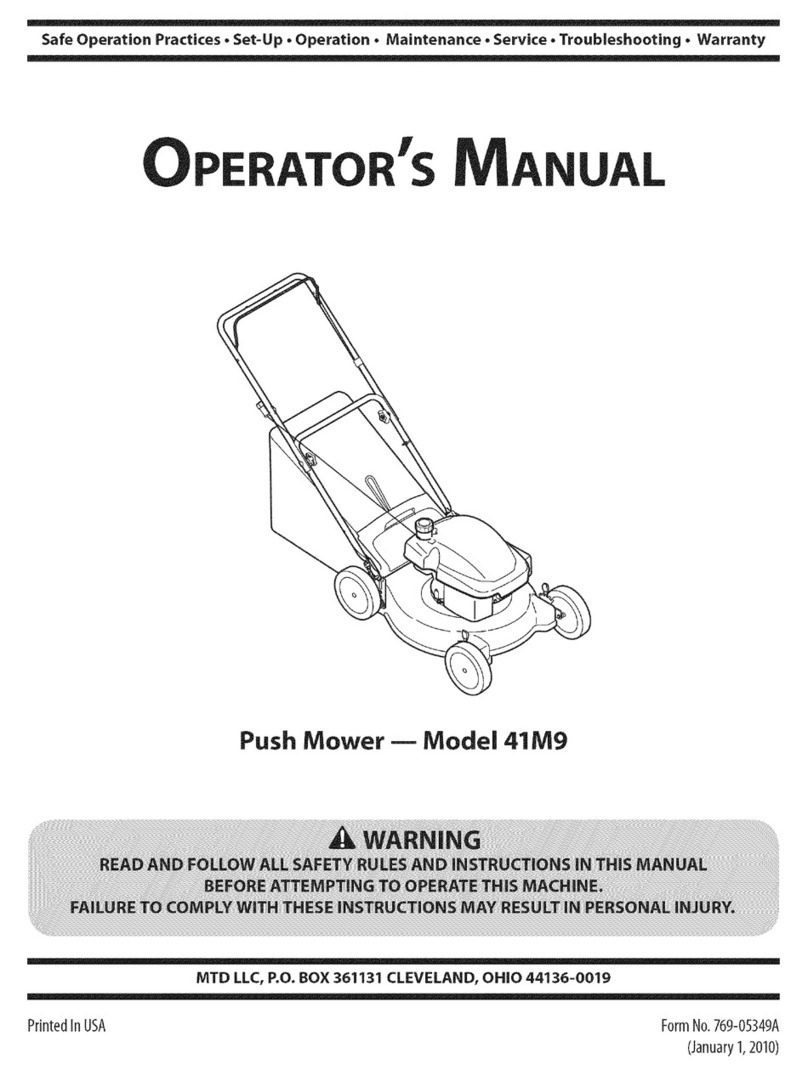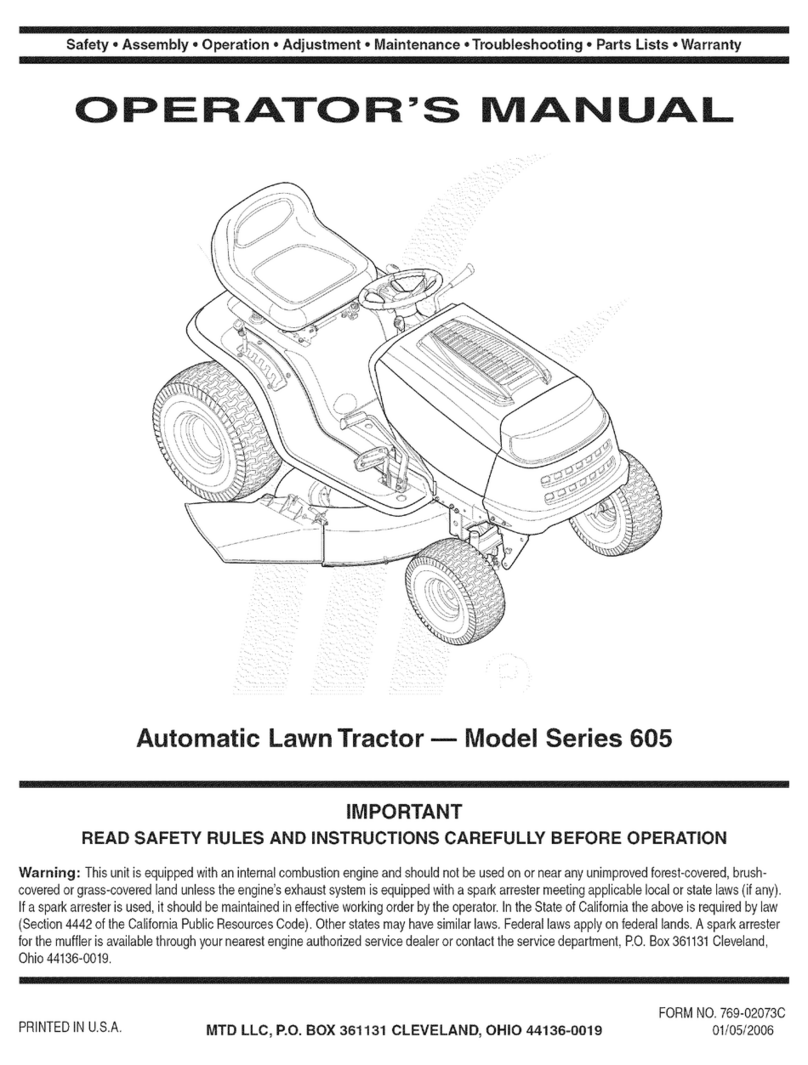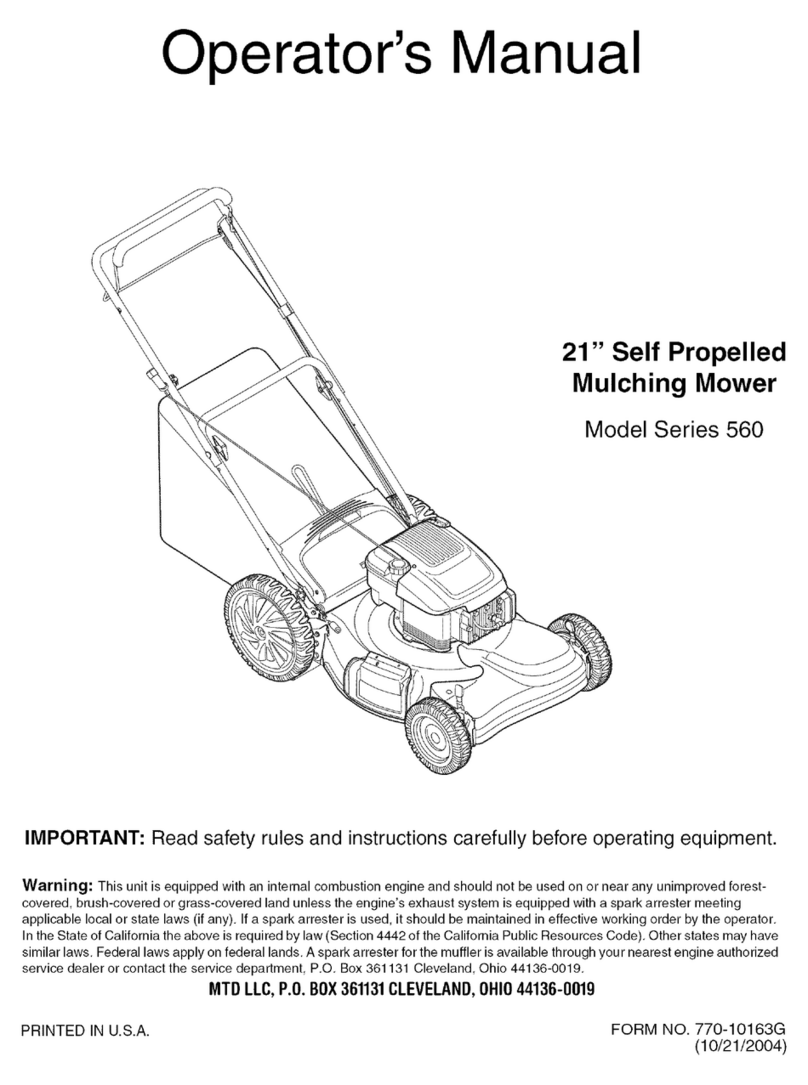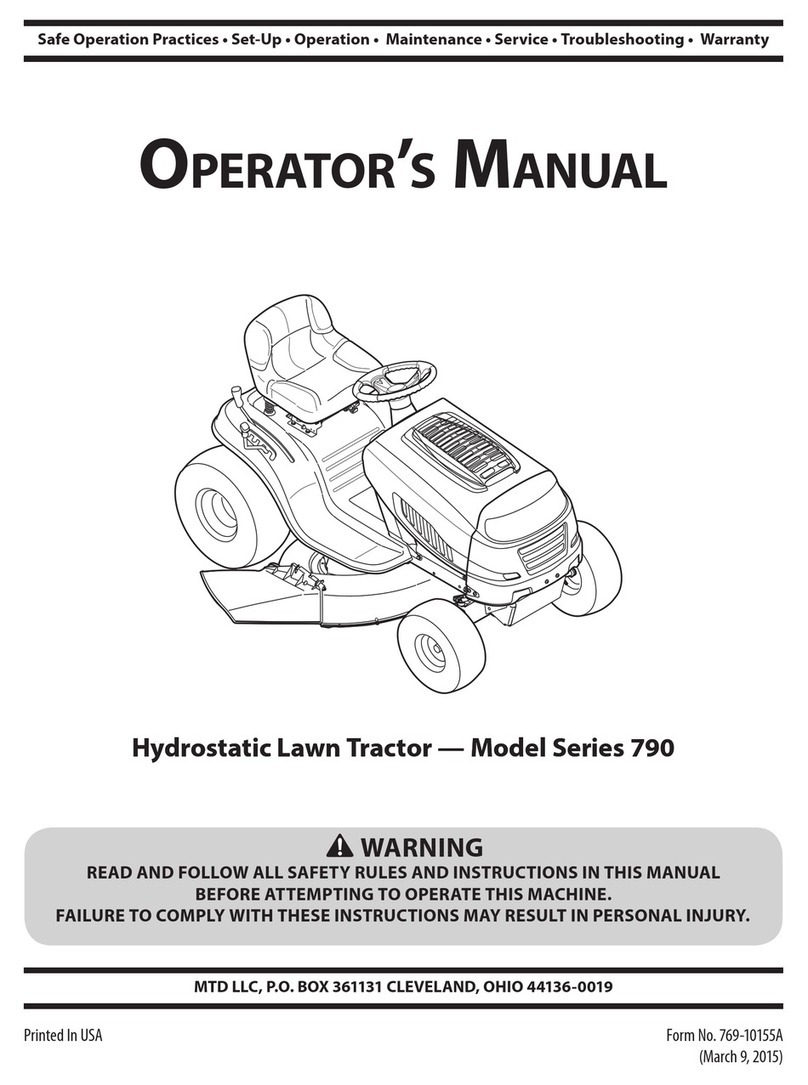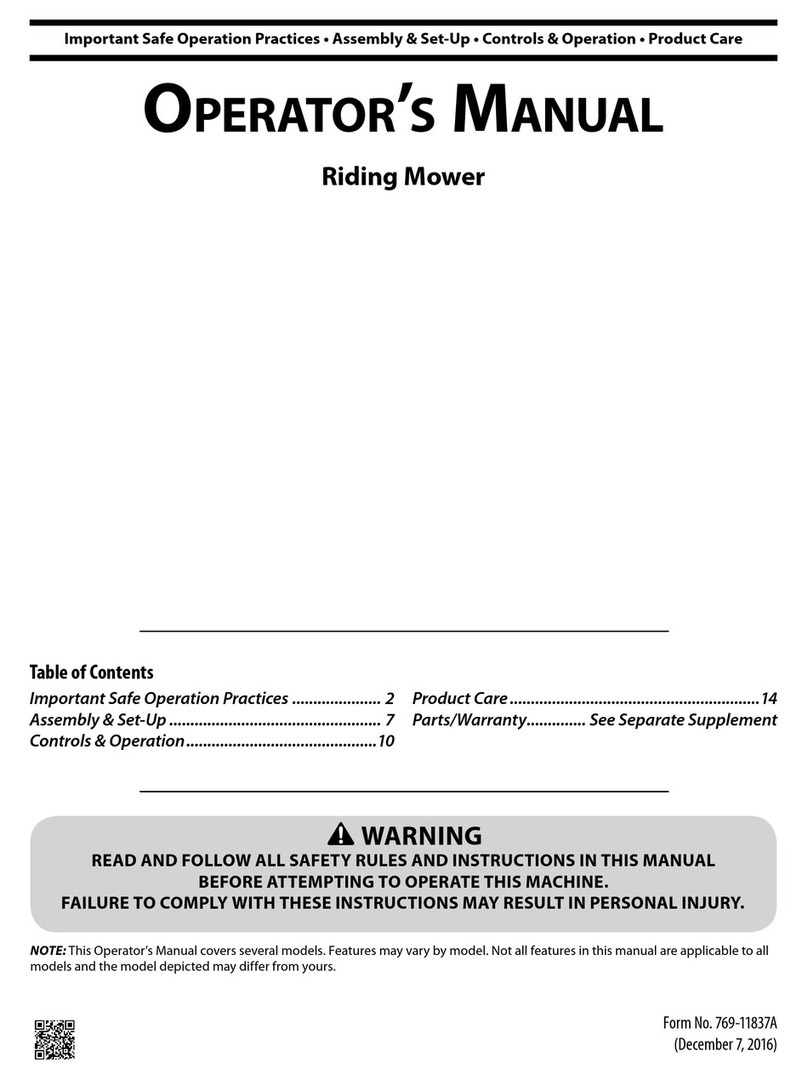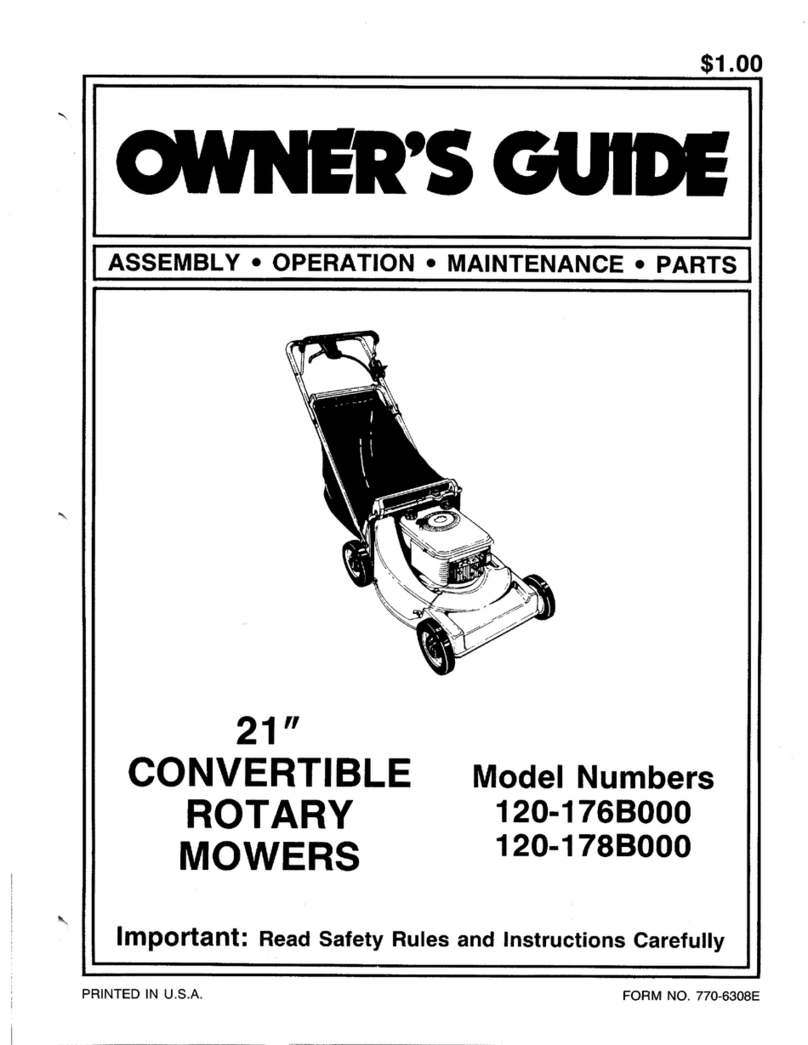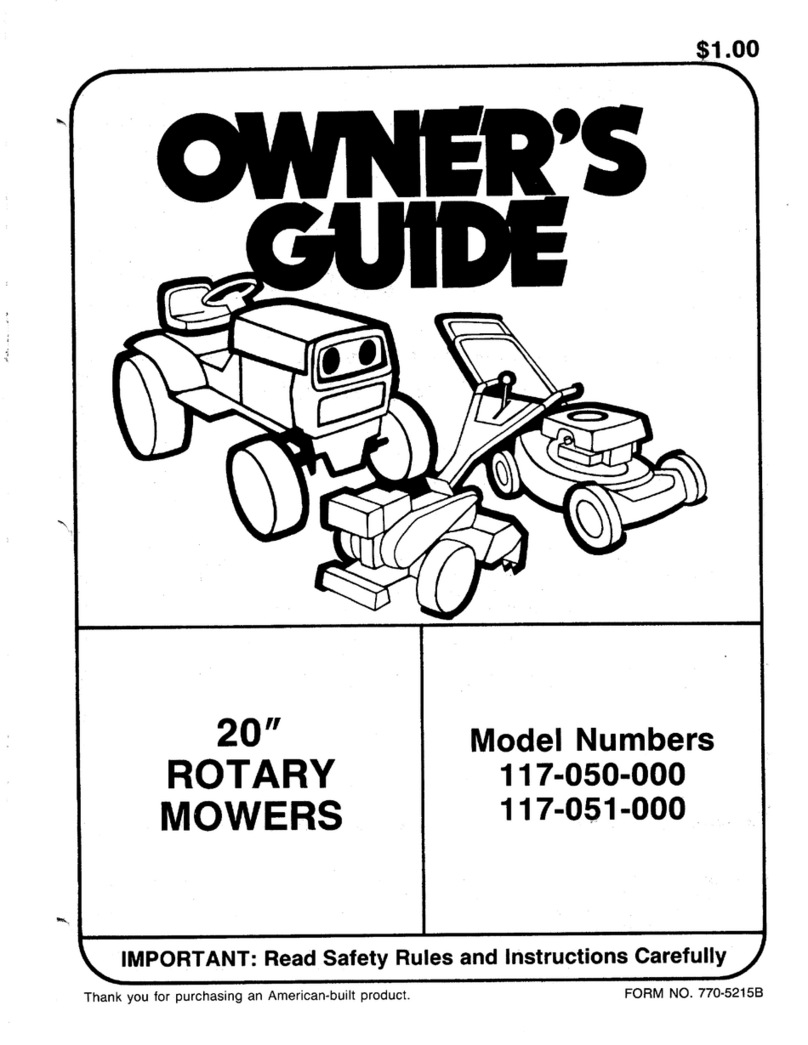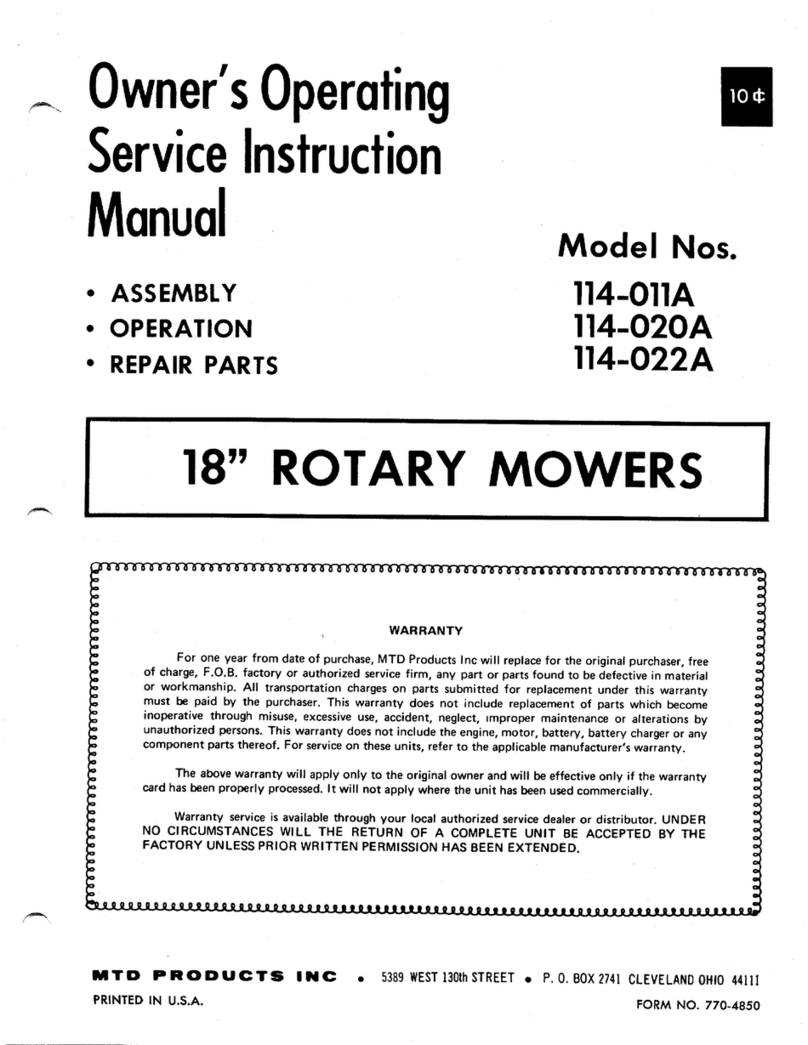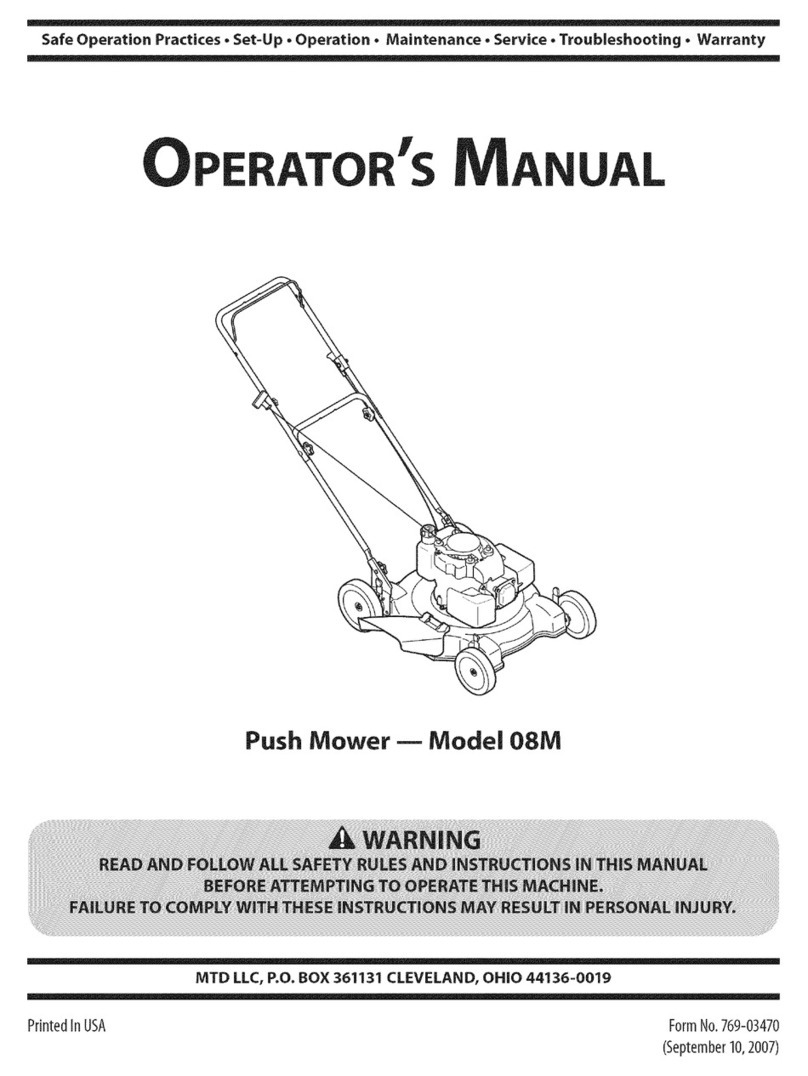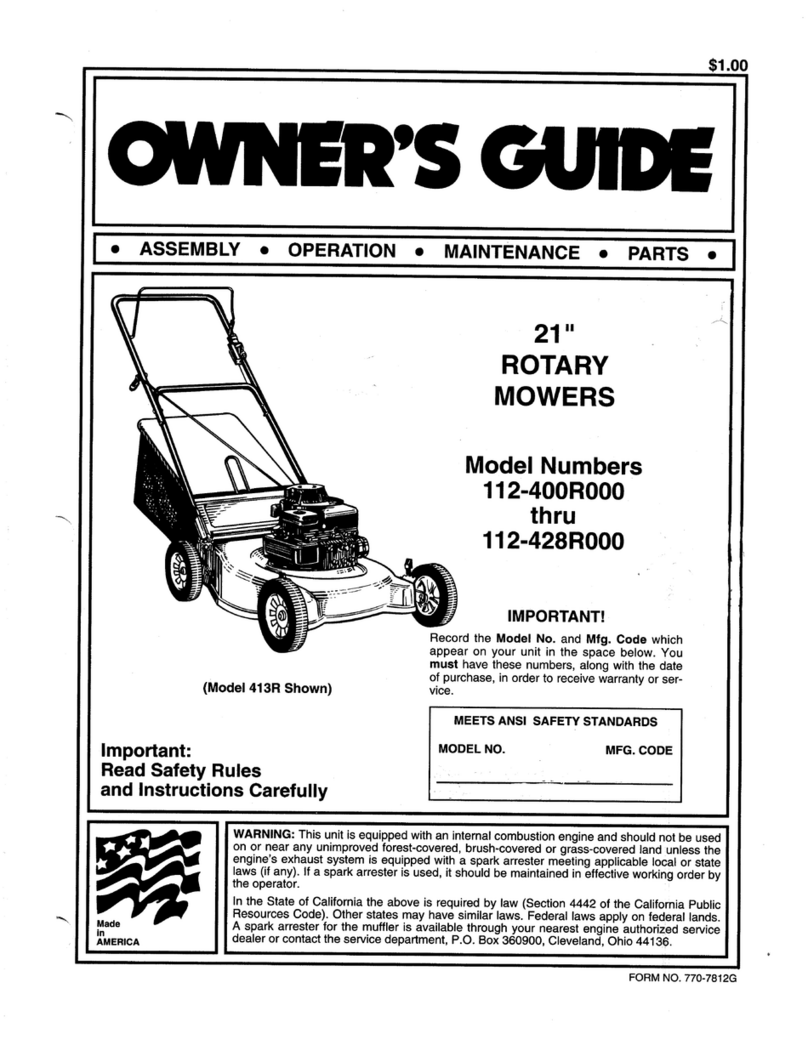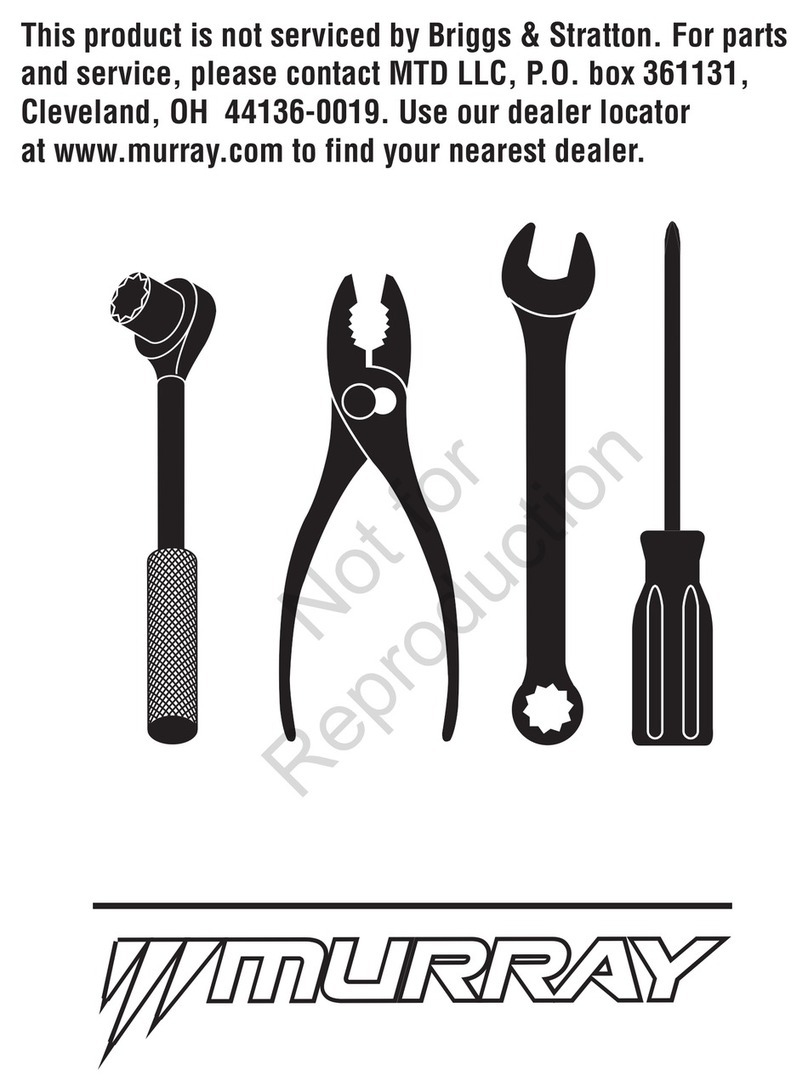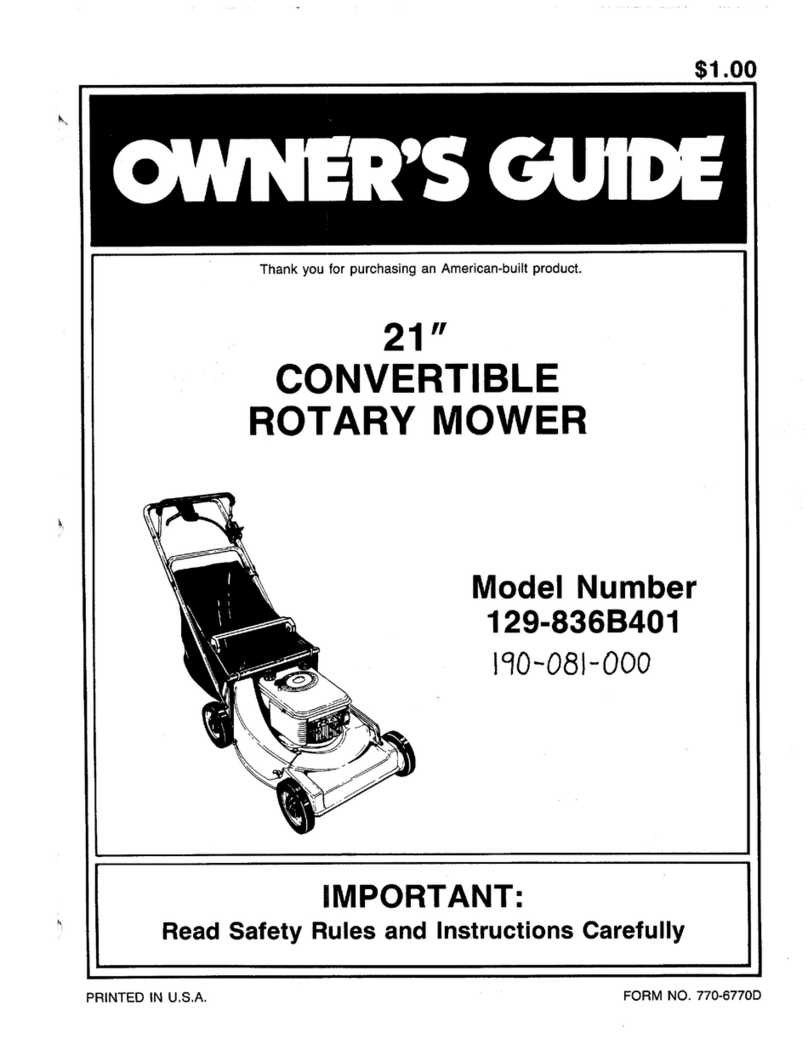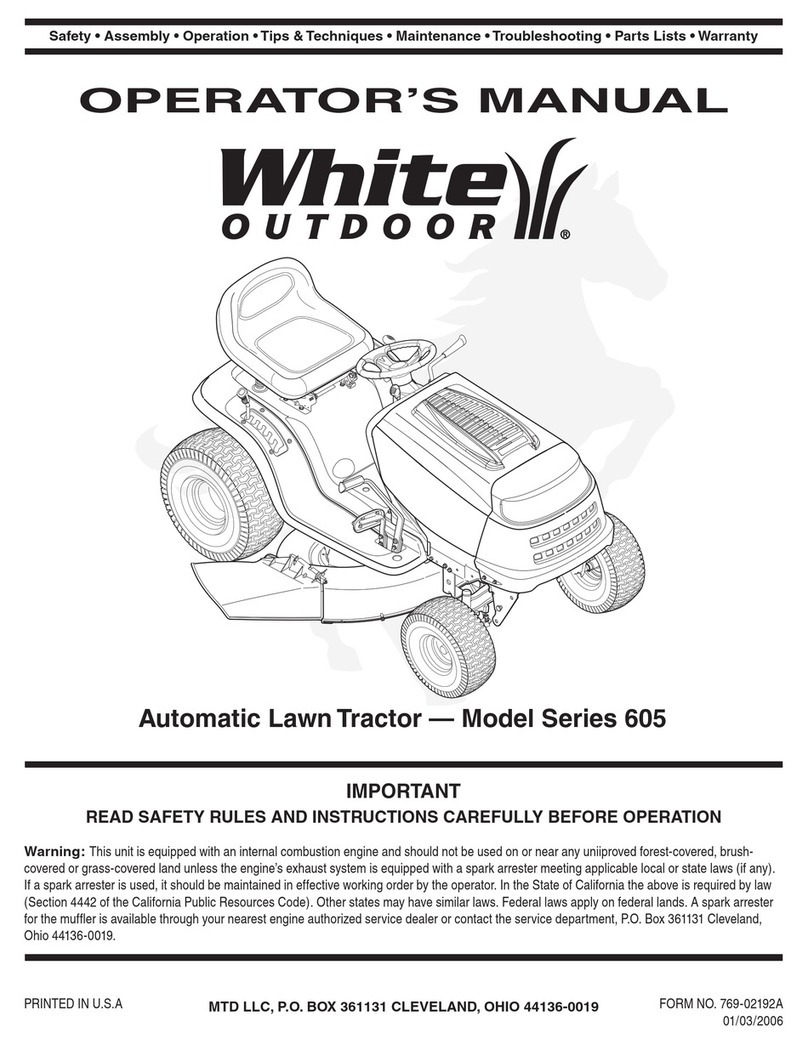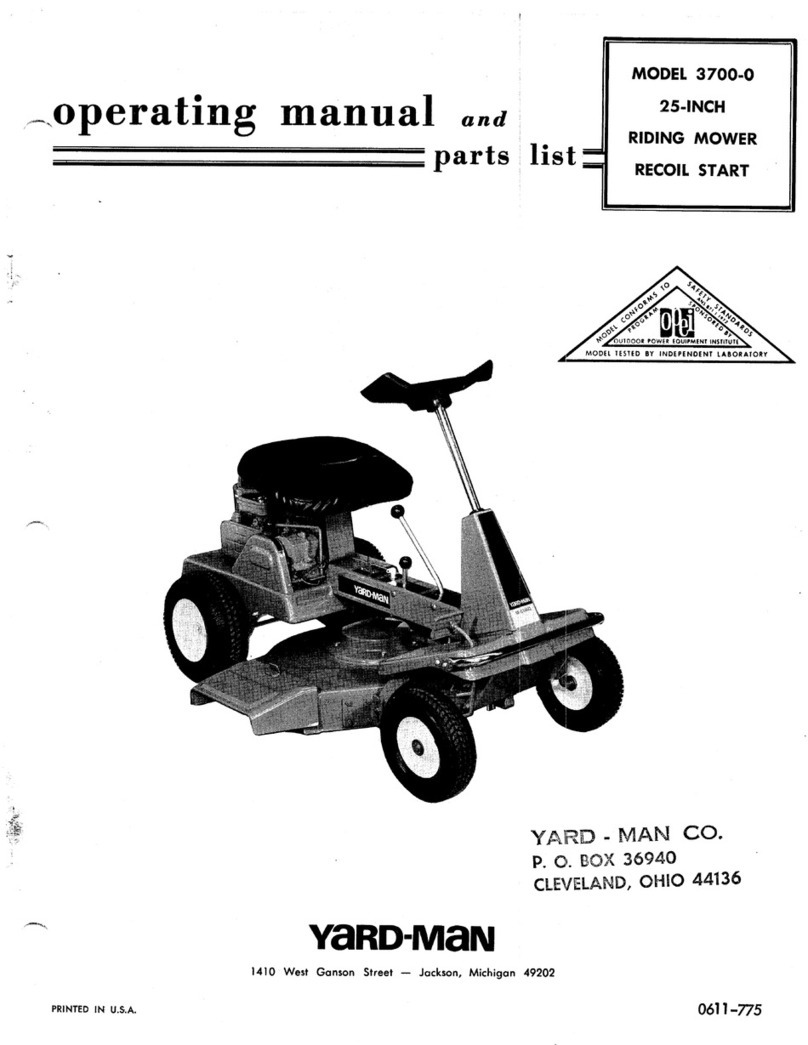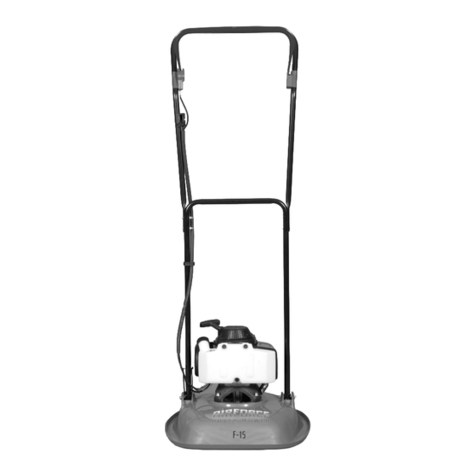
INTRODUCTION
2
Fasteners
• Most of the fasteners used on the vehicle are
sized in fractional inches. Some are metric.
For this reason, wrench sizes are frequently
identified in the text, and measurements are
given in U.S. and metric scales.
• If a fastener has a locking feature that has
worn, replace the fastener or apply a small
amount of releasable thread locking compound
such as Loctite® 242 (blue).
• Some fasteners like cotter pins are single-use
items that are not to be reused. Other fasteners
such as lock washers, retaining rings, and inter-
nal cotter pins (hairpin clips) may be reused if
they do not show signs of wear or damage. This
manual leaves that decision to the judgement of
the technician.
Assembly
Torque specifications may be noted in the part of the
text that covers assembly or they may also be summa-
rized in tables along with special instructions regarding
locking or lubrication. Whichever method is more
appropriate will be used. In many cases, both will be
used so that the manual is handy as a quick-reference
guide as well as a step-by-step procedure guide that
does not require the user to hunt for information.
The level of assembly instructions provided will be
determined by the complexity and of reassembly, and
by the potential for unsafe conditions to arise from mis-
takes made in assembly.
Some instructions may refer to other parts of the man-
ual for subsidiary procedures. This avoids repeating
the same procedure two or three times in the manual.
Understanding model and serial numbers
The model number is 18A-188-710. The break down of
what the number mean is as follows:
• 18 - - - - - - - - - indicates that this is an electric
mower
• - - A - - - - - - - - indicates the sales level
• - - - - 18 - - - - - indicates the series and trim
• - - - - - - 8 - - - - indicates it is DC powered (cord-
less)
• - - - - - - - - 710 indicates that it is a Cub Cadet
The serial number is 1J056G10005. The serial number
reads as follows:
1...........................engineering level
..J.........................month of production (J = October)
.....05....................day of the month
.........6..................last digit of the year
...........G................plant it was built in
..............1.............assembly line number
.................0005.....number of unit built
Additional technical and service information may also
be available to our company authorized service center
personnel through our company corporate offices,
regional parts distributors and regional service center
field support personnel. Please contact the designated
support office in your area or our corporate offices
directly should further service information be needed.
For Cub Cadet
Cub Cadet LLC
P.O. Box 368022
Cleveland, OH 44136
Telephone: (330) 273-8669
www.cubcadet.com
Or for MTD Brands
MTD Products LLC
P.O. Box 368022
Cleveland, OH 44136
Telephone: (800) 800-7310
www.mtdproducts.com






